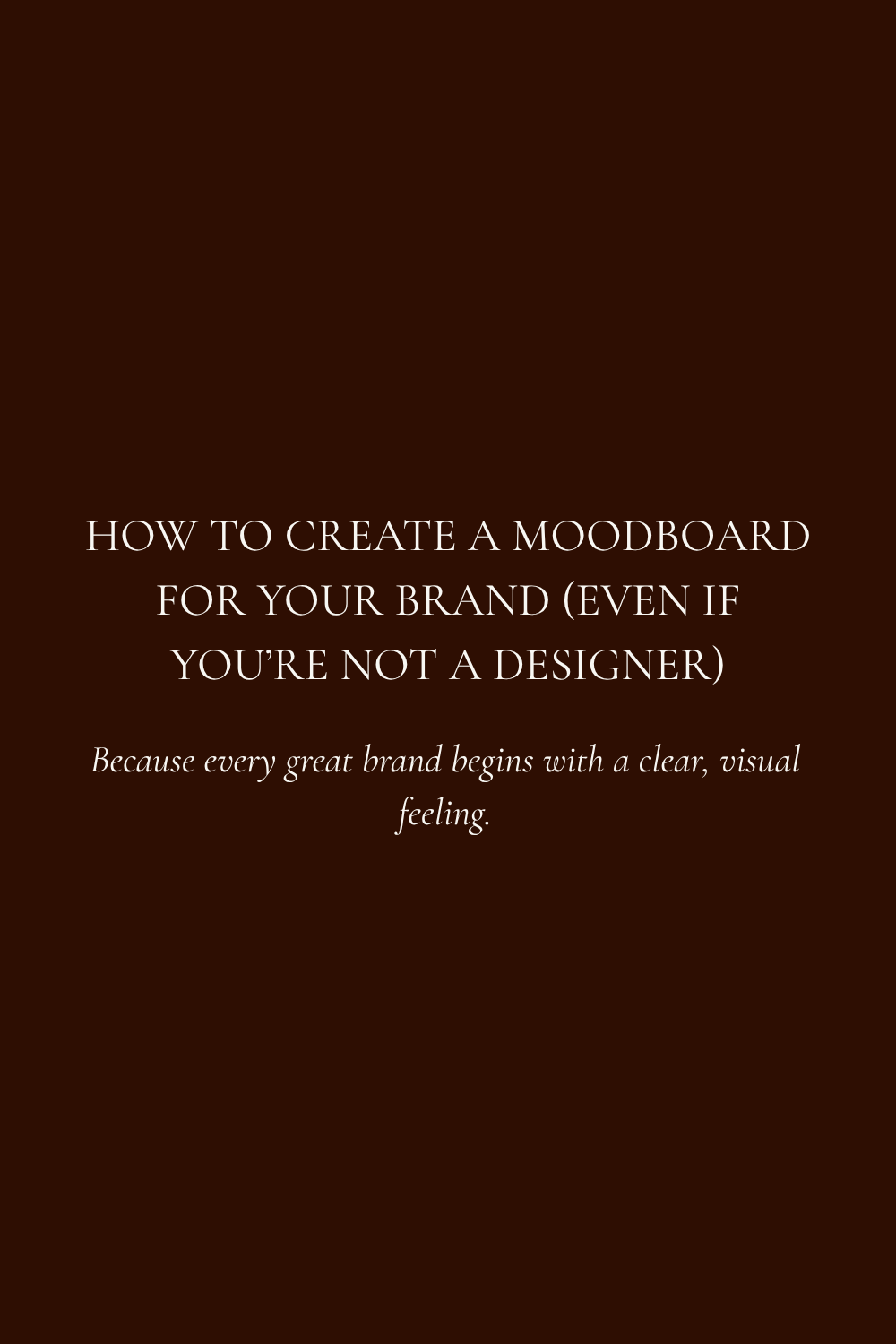Because every great brand begins with a clear, visual feeling.
Before a logo. Before your colours. Before you choose a single font.
There’s the mood.
It’s the part of branding that’s often skipped over in a rush to “get it done,” but it’s the most important step in helping your brand actually feel like you.
And the good news?
You don’t need to be a designer to create a beautiful, intentional brand moodboard.
You just need a little guidance — and a lot of curiosity.
Whether you’re DIY-ing your brand or working with a designer, this step will help you visually map the style, tone, and emotion of your brand in a way that makes everything else (from colours to copy) feel a hundred times easier.
Here’s how to create a moodboard for your brand — step by step.
Step 1: Define your brand’s emotional tone
Before you collect images, define what you want your brand to feel like.
Ask yourself:
👉 What three to five words describe how I want people to feel when they experience my brand?
(E.g. grounded, elevated, playful, minimalist, warm)
👉 What’s the energy or vibe I want to bring into the room?
👉 What brands do I admire — and what do I love about their visual world?
Start to notice how feelings show up visually. Is “calm” expressed through soft neutrals or wide open spaces? Is “creative” conveyed through bold colour or eclectic textures? Let emotion lead the way.
Step 2: Choose your platform
You can build your moodboard digitally or physically. For most DIY brand-builders, I recommend one of these:
👉 Pinterest — great for collecting a wide range of inspo quickly
👉 Canva — ideal if you want to arrange, crop and design your own board
👉 Milanote — perfect for drag-and-drop, flexible layouts
👉 Your phone or tablet — use the Notes app, photo albums, or a collage app
Choose the tool that feels easiest for you — not the fanciest one.
Step 3: Start collecting visual inspiration
This is where the magic starts.
Look for:
→ Colours that make you feel something
→ Typography styles you’re drawn to
→ Textures or materials that remind you of your product or service
→ Spaces that feel like your brand’s energy (interiors, architecture, nature)
→ Photography styles (light, moody, editorial, raw)
→ Fashion, food, florals, packaging, patterns — whatever lights you up [for me, interior design is my inspiration]
Important: Don’t only save logos or design layouts. This isn’t about copying another brand — it’s about collecting the visual language of yours.
Step 4: Curate (don’t just collect)
Once you’ve gathered a good chunk of inspiration — aim for 30–50 images — it’s time to curate.
Ask:
👉 Which of these actually align with my brand’s emotional tone?
👉 Are there patterns appearing? (e.g. lots of neutrals, soft textures, editorial style images)
👉 What doesn’t fit, even if I like it?
Narrow it down to 9–12 core images. These should visually represent the tone, style, and mood you’re building. (Hint: If an image stands out too much, remove it — your board should feel cohesive.)
Step 5: Arrange with intention
Now place your final images into a grid or collage. You can use a Canva template or design one from scratch.
Keep in mind:
👉 Include a mix of colour, texture, and typography
👉 Place bolder images next to softer ones to balance visual weight
👉 Repeat tones or materials to create cohesion
When you look at your final board, you should feel like you’re stepping into your brand’s world — even if there’s no logo or tagline in sight.
Bonus Tips:
Don’t overthink it. The moodboard is a tool — not a final product. It’s here to help you gain clarity, not chase perfection.
Refer back often. Use it to guide your colour palette, fonts, packaging design, and content creation.
Let it evolve. As your brand grows, your style might shift. That’s okay. Your board isn’t set in stone — it’s a living reference.
Final Thoughts:
You don’t need to be a designer to have a strong visual identity.
You just need a clear sense of what feels like you.
By starting with a thoughtful moodboard, you’re giving your brand a visual foundation that feels aligned, intentional, and cohesive.
Because when you create from the inside out — rather than copying what’s trending — you build something that lasts.
